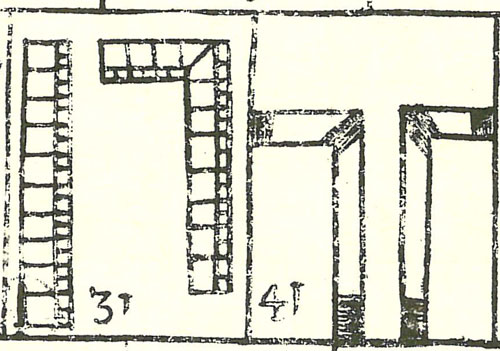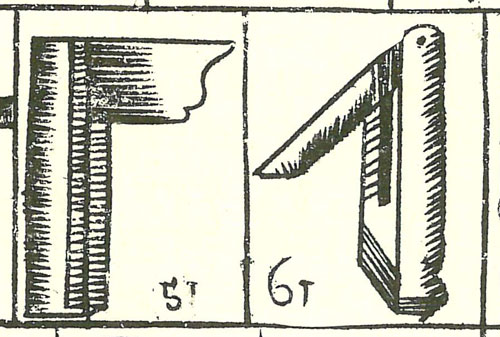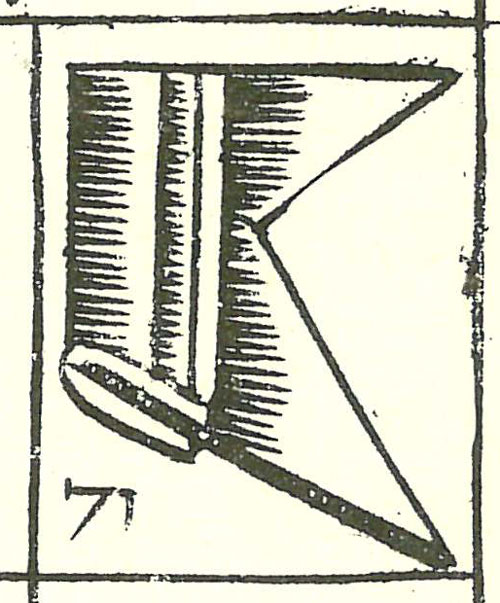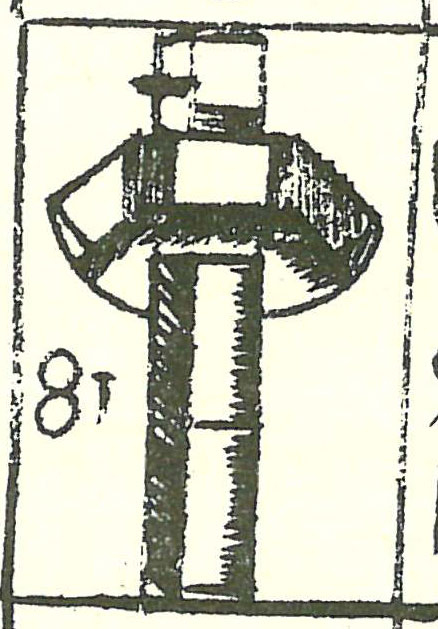
XIII. He beareth Gules, a Joyners Rule, or a two Foot Rule, Or; and a Carpenters Square, Argent. The Rule is equally divided into two foot, which is againe subdivided into 24 Inches, these also brought into halfe and quarters of Inches; And are for the best use, generally made of Box or Peare tree, or some other hard wood. This may also be termed a Geomatricall Staffe, or a Yard, when it is thus divided.
The Carpenters Square, is made generally of Iron. the shorter part being a foot, and the longer part two foot, both ends being divided into Inches, half and quarter inches. Its use, besides Measuring, is to strike or draw streight Lines, and to try the squareness of the work, whether it be true or not.
An Hand and Arm holding such a square O. Sleeve G. turned up A. is the Crest of the Carpenters Company of the City of Chester.
A. a Cheveron between 3 such S. born by Atlow.
XIV. He beareth Azure, two Carpenters Squares endorsed and issuant, Or. By the name of Getzell.

XV. He beareth Vert, a Joyners Square, Or; it is made of two pieces of Wood, the one Mortessed into the other, and so shot exactly streight as to make a square within, and by the help of the side lying Parallel to another streight piece, either a streight Line or a square Angle may be drawn.
The Handle, is the Mortessed piece.
The Tongue, is the piece put into the Mortess.
The outward Square.
The inward Square.
There is another way of making the Joyners Square, whose Figure you may see chap. 8. numb. 134.
B. 3 Squares, 2 endorsed, the 3 to the Sinister A. born by Vetzer of the Rhine.
XVI. He beareth Gules, a Bevil moving square, Or; or else a moving Bevil square: This Square upon the moveableness of the Tongue upon a Center, may be set to strike Angles of any greater or lesser number of degrees; according to the opening it, too or from the Handle; when as all other fixed Bevil squares take the Angles at 45 degrees only, as in the Miter square following.
S. 3 such O. a Border A. is born by Movere.

XVII. He beareth Sable, a Miter square, Or. This Square hath also an Handle and a Tongue, as that mentioned numb. 15. whose use is to strike either Square or Miter Lines according as you apply the ends of it to the out-sides of the Quarter or Batten you are to work upon: By the help of this, Miter or Bevil Lines are Cut or Sawed so exact, that two being joined together, it will make an Angle; thus square Frames for Pictures, Looking Glasses, and such like are commonly made.
S. the like points reversed O. in Chief a Lion passant A. born by Parly.

XVIII. He beareth Argent, a Gage, or Oval Gage, or Joyners Gage (of some termed a Swage) Gules. It is made of either a square, or six square piece of Wood, fitted by a square hole through the middle very stiff upon a Staff, that it may be set nearer or farther off the Tooth at the side end of the said Staff. Its office or use is to strike a Line Parallel to any streight side; it is used for the Gaging of Tenants, or any Stuff to be Cut or Plained to an equal thickness.
Some Gages have a Screw through the Square, that if it slip too easie on the Staff, the Screw by turning it to the Staff doth keep it from moving.
— From Randle Holme’s “The Academy of Armory, or, A Storehouse of Armory and Blazon” Book III, Chapter IX. Why am I reading this?